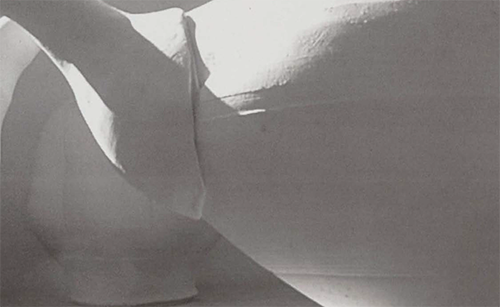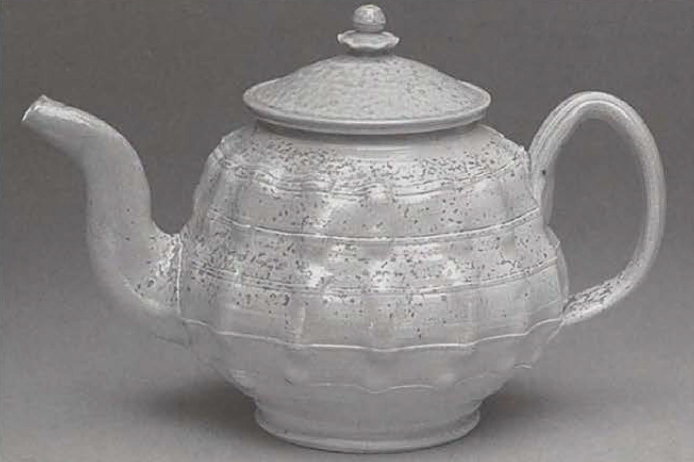
Linda Sikora is one of our most thoughtful and articulate makers of functional pots and an influential teacher. In the summer of 2002 I saw an exhibition of her work at the Ferrin Gallery in Massachusetts that featured teapots and covered jars. The pots were strongly based in historic European porcelain traditions, yet had a playfulness and contemporary feeling that seemed to include other histories. It was as if Staffordshire somehow had met the pattern enamels of Tomimoto and been reborn alive in flowing movement. The forms were well structured yet unrestrained; ruffles and pinches in the soft porcelain surfaces animated selected panels in the rigorously thrown shapes. The detailing was fierce; spiraling and sometimes pierced finials, complexly profiled handles, sweeping slab-built spouts, crisply turned feet. The surfaces too seemed to dance around the strong shapes; rich patterns of glazes trailed adjacent to one another, tessellated around the pots in geometric exuberance. And the surfaces were just holding their patterned clarity; a bit more time in the kiln, a touch more heat and the whole thing would flow into illegibility. Pyroplasticity, that fusion without collapse, was displayed with a stunning wit, pleasure, and virtuosity.
I talked with Linda in the late fall of 2003. What follows is a trimmed version of her comments from our conversation - necessarily condensed, for Linda relishes talking and thinking as much as she does making pots. A talk with her can be a journey through the cultural history of the last century or an impassioned discussion of her solitary work in the studio. I saw a number of themes emerge from our conversation and from her work, and although in her practice and thought these ideas are more intertwined than they will appear here,I have organized what I heard as the dominant idea , beginning with the specifics of her studio work and moving to the intellectual framework and motivation that shape the making of these pots and inform her teaching.
WHITE POTS
Linda 's work took an unusual turn several years ago when she stopped applying glaze and made a series of white pots: round porcelain hapes, simply wood and salt-fired. Instead of polychrome glazed surface, these white pots showed only slight fire marking and a soft salt sheen.

When I started to do the white work, part of the motivation was to find out what was underneath the glaze. I felt that I didn't really know what was under there. It was inspired by Staffordshire, of course, and by pots I was using at home. But I wondered if the white work could hold some of the energy that was starting to become apparent in the glazed work.
